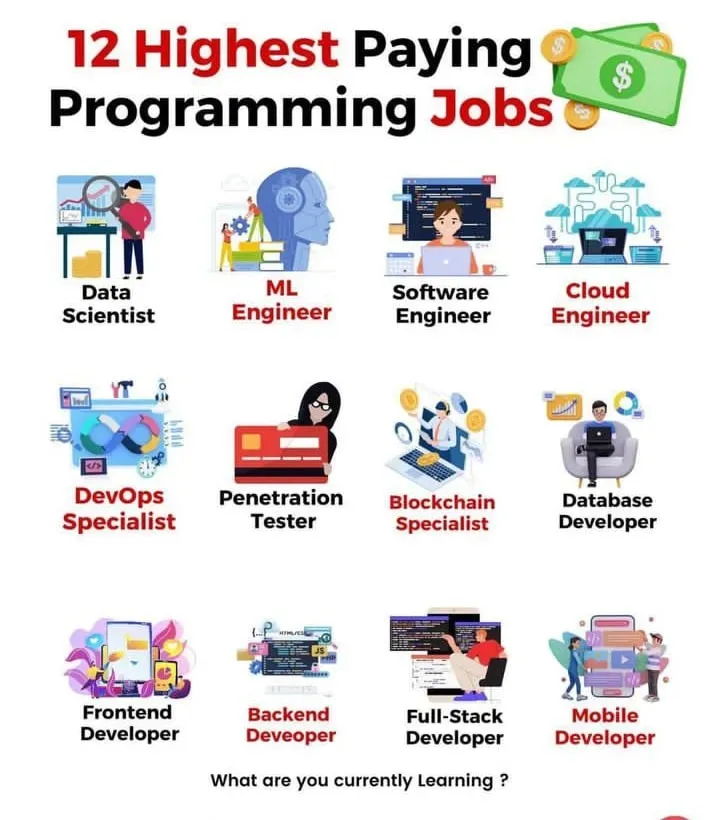Choosing the Right Programming Language is more than a personal preference—it’s a strategic decision that shapes how your project performs, scales, and endures across teams, environments, and time, affecting everything from architecture choices to maintenance cycles. A practical programming language selection guide helps product owners and engineers translate ambitious goals into concrete criteria, from latency targets and data processing needs to deployment timelines and team readiness. Beyond the code syntax, evaluate the language’s tooling, library maturity, and integration story, because a robust toolchain accelerates onboarding, testing, and continuous delivery in real-world projects for long-term compatibility. Take the team experience and learning curve into account, since the easiest entry point today can yield faster initial delivery while a steeper ramp might unlock longer-term gains if it aligns with the roadmap. Finally, weigh performance, scalability, and maintenance as enduring constraints—ensuring reliable operation under load, predictable upgrades, and clear ownership as your system evolves.
Put differently, the choice boils down to aligning project needs with the right coding language and its supporting technologies. This means weighing runtime options, library maturity, and ecosystem signals so teams can leverage familiar patterns while staying adaptable to change. In practice, you’re balancing developer proficiency, tooling readiness, deployment realities, and the long-term health of your codebase to avoid drift or tech debt.
Choosing the Right Programming Language: A Practical, Goal-Aligned Decision
Choosing the Right Programming Language is not merely a matter of personal taste or the latest hype; it’s a strategic decision that should be driven by your project’s goals, constraints, and long-term maintenance considerations. This perspective aligns with a structured programming language selection guide and aims to help teams identify the option that balances performance, time to market, and ease of evolution. By grounding the choice in concrete project outcomes—such as throughput, reliability, security, and stakeholder needs—you can move beyond trendiness to select a language that delivers real business value.
In practice, begin by mapping core objectives and deployment realities, then weigh the trade-offs between performance, developer productivity, and ecosystem maturity. Consider the best programming language for your project within the context of your language ecosystem and tooling, while also factoring in the team experience and learning curve. The goal is to converge on a choice that supports scalable maintenance, predictable delivery, and a clear path for future enhancements, rather than chasing fashionable features.
Evaluating the Language Ecosystem, Team Readiness, and Practical Trade-offs
A healthy language ecosystem and tooling can dramatically accelerate development and reduce risk. When evaluating options, look for mature package managers, robust libraries, testing frameworks, clear deployment stories, and strong community support. This aligns with the language ecosystem and tooling criteria in a programming language selection process and helps you answer questions like: Which language offers the most reliable support for your data stores, messaging systems, and observability needs? How does the tooling integrate with your CI/CD and monitoring stack? These factors often influence the long-term viability of a choice as much as core language features.
Beyond technical fit, team readiness matters just as much as the code itself. Assess the team experience and learning curve, onboarding time, and the availability of developers who can contribute immediately. A familiar language may speed initial delivery and reduce defects, while adopting a new one can unlock substantial gains if it fits your roadmap and talent strategy. Plan a staged adoption, run prototypes to compare performance and maintainability, and ensure maintenance considerations—such as readability, documentation, and long-term support—are baked into the decision to sustain performance, scalability, and maintainability over time.
Frequently Asked Questions
In Choosing the Right Programming Language, how should I weigh performance, scalability, and maintenance when selecting a language for my project?
Performance, scalability, and maintenance are interconnected decision factors. Start by mapping expected load and latency needs, then assess how the language handles concurrency and memory usage. Consider long-term maintenance costs, including readability, availability of skilled maintainers, and tooling for profiling, debugging, and monitoring. Use a simple rubric to score candidates against these criteria, run quick prototypes of critical paths, and pick the language that best aligns with your project goals and team capabilities.
How does language ecosystem and tooling influence Choosing the Right Programming Language, and what should I evaluate in a candidate?
Language ecosystem and tooling can dramatically speed development and reduce risk. Look for a mature ecosystem with robust package managers, libraries, testing frameworks, and clear deployment stories. Also assess integration with your CI/CD, monitoring, observability, and security tooling, plus build times and platform compatibility. Ensure the ecosystem aligns with your domain (web, data science, mobile, embedded) and consider prototyping to gauge onboarding and long-term support.
| Section | Key Point |
|---|---|
| Introduction | Choosing the Right Programming Language is a strategic decision impacting performance, time to market, maintainability, and team capability; aim to balance trade-offs to fit the project context. |
| 1) Start with the project goals and constraints | Articulate core goals (performance, time to market, reliability, security, scalability) and constraints (environment, deployment frequency, budget); select a language that aligns with these needs; e.g., performance-focused vs productivity-focused. |
| 2) Evaluate the ecosystem, tooling, and libraries | Ensure mature tooling and libraries, strong package managers, testing frameworks, clear deployment stories, and good community support; consider domain-specific ecosystems; assess build times and CI/CD compatibility. |
| 3) Assess team experience, learning curve, and collaboration | Evaluate learning curve and onboarding; availability of experienced developers; impact on cross-functional collaboration; weigh familiarity vs potential gains from a new language. |
| 4) Examine performance, memory, scalability, and maintenance implications | Consider performance, memory safety, and scalability; plan for monitoring and profiling; assess long-term support, readability, and maintenance costs; strong tooling for debugging and tracing helps long-term stability. |
| 5) Align with deployment targets and operational realities | Consider deployment model (native binaries, VMs, runtimes), hosting strategy, containers, and serverless; startup time and cross-compilation matter for mobile/embedded; ensure operating model fits language choices. |
| 6) Use a practical decision framework, not a single “best” language | Create a weighted rubric; shortlist languages; score on performance, ecosystem, team readiness, maintainability, and future-proofing; prototype quickly and gather stakeholder feedback; iterate toward a defensible choice. |
| 7) Apply concrete examples to illustrate the choice | Map project scenarios (web service with high concurrency, data-heavy batch processes, small internal tools) to language characteristics like concurrency, numerics libraries, and development speed to make the selection objective. |
| 8) Mitigate risk with prototyping and staged adoption | Prototype key components in candidate languages; adopt in stages (start with non-critical modules); establish coding standards and shared libraries to ease collaboration and reduce risk. |
| 9) Common myths and practical pitfalls | Newest language isn’t automatically best; team bias can skew judgment; premature optimization can derail decisions; you may need multiple languages across services to balance strengths. |
| 10) A concise, repeatable process you can use again | Define goals; shortlist candidates; evaluate with a weighted rubric; build minimal prototypes; decide and plan staged adoption as needed. |
Summary
Conclusion: Choosing the Right Programming Language is a strategic, context-driven decision. By focusing on project goals, ecosystem, team readiness, and operational realities, you can select a language that not only meets current needs but also supports future growth. The right language aligns with your project requirements and your team’s ability to deliver consistently. Treat language choice as an ongoing conversation: as your project evolves, reassess whether the original decision still serves you well, and be prepared to adjust with care. A structured, evidence-based approach to language selection helps maximize the chances of delivering robust, scalable, and maintainable software that stands the test of time.



